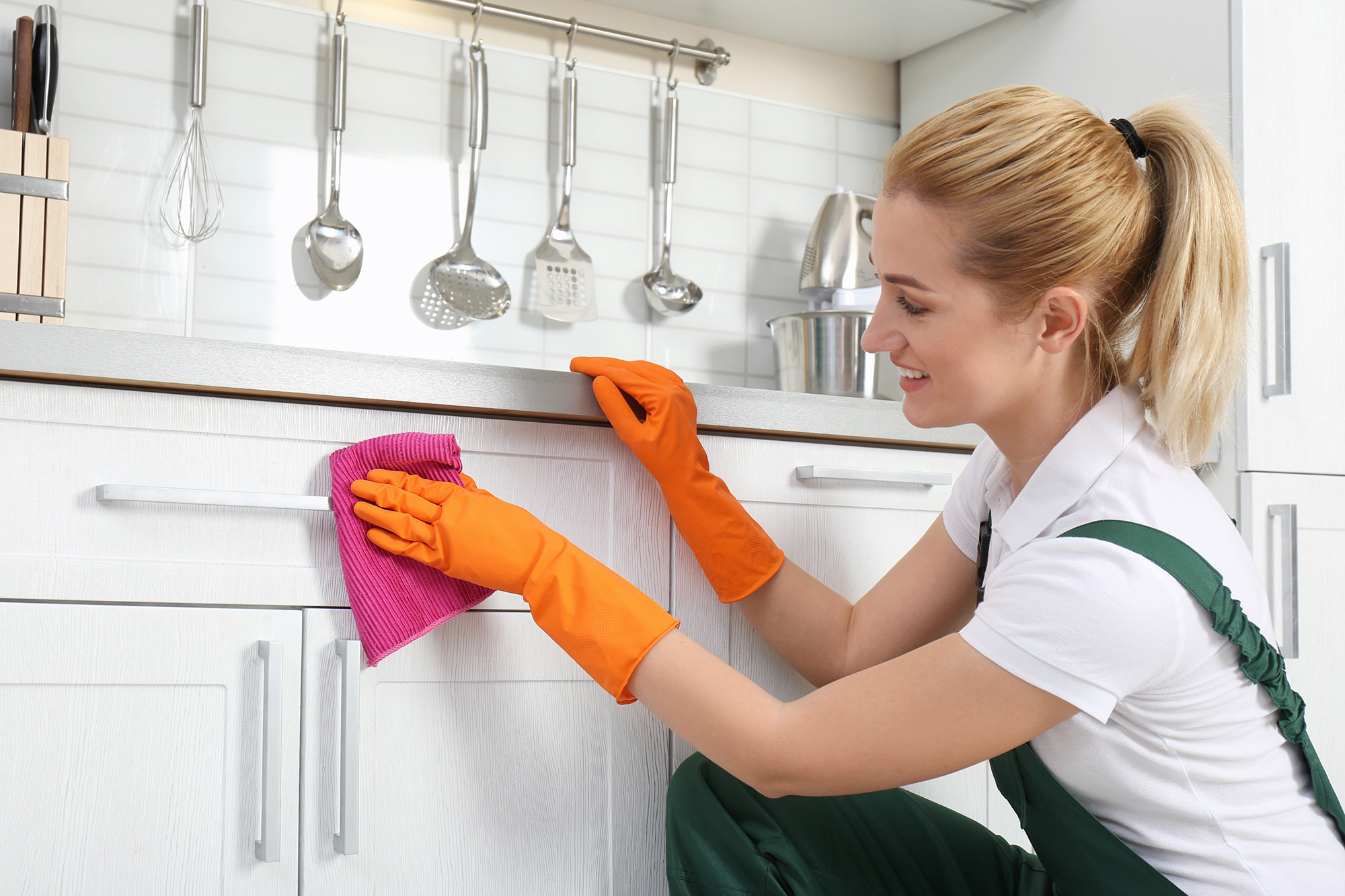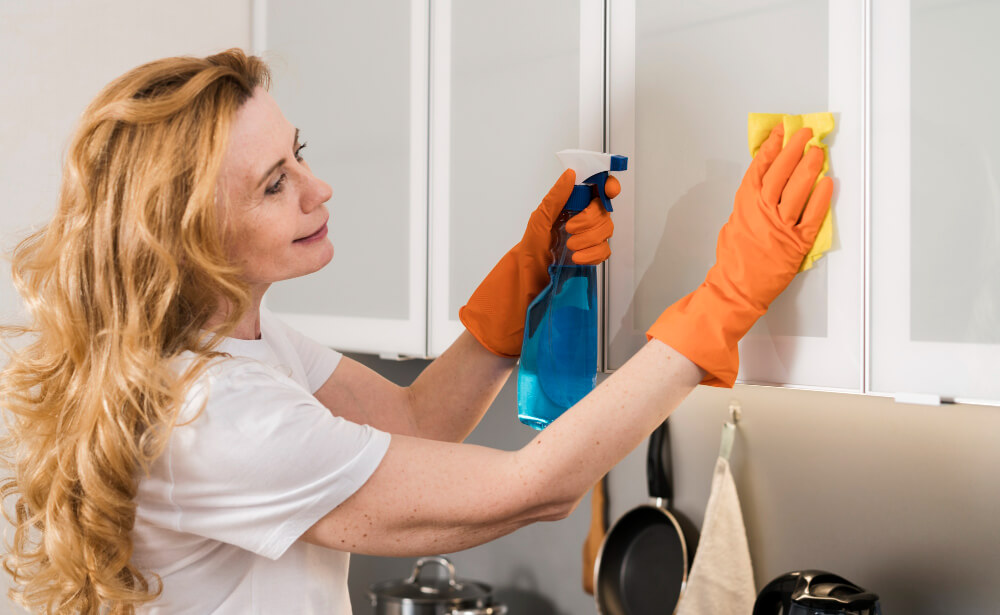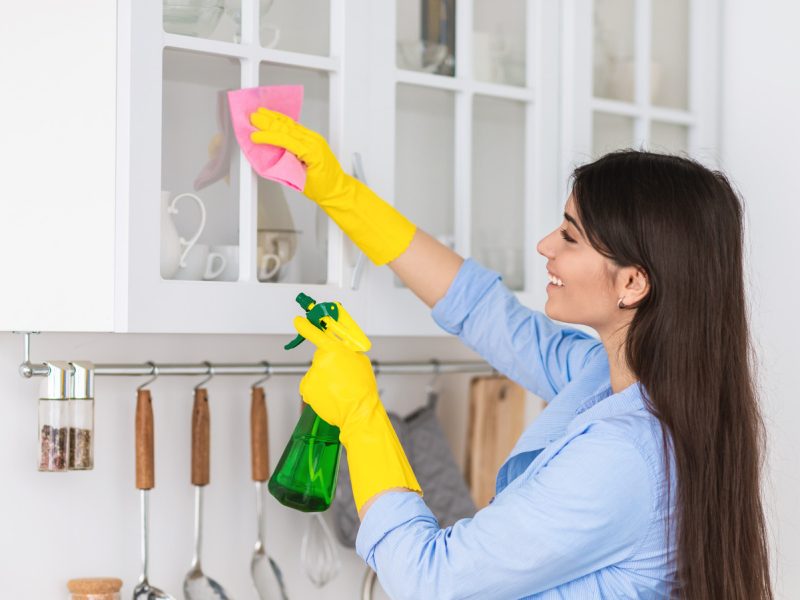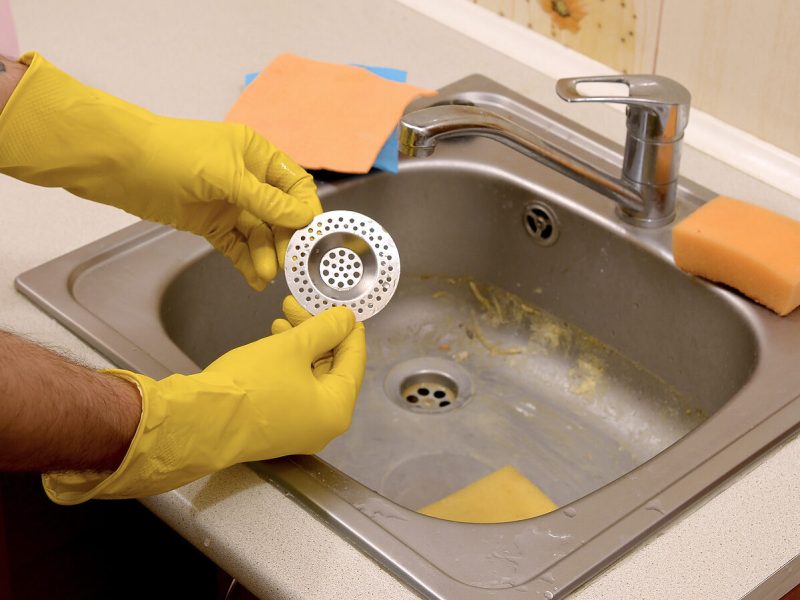DIY kitchen cabinet cleaner is a great way to keep your cabinets looking great and free of dirt and grime. You can use a simple mixture of dish soap, vinegar, and water to make a safe and effective cleaner that will leave your cabinets looking brand new. With a few simple ingredients and a little elbow grease, you can easily make your kitchen cabinet cleaner and keep your cabinets looking their best.
Kitchen Cabinet Cleaning Tips
Having a clean kitchen is essential for a healthy home. Keeping your kitchen cabinets clean and organized doesn’t have to be a difficult task. With a few simple tips and tricks, you can make sure that your cabinets remain in pristine condition.
Start by decluttering your kitchen cabinets. Get rid of any items that you no longer need or use. This will make the cleaning process much easier. Once you’ve cleared out the cabinets, give them a thorough vacuum and dusting. You can use a damp cloth or a dusting tool to reach into the crevices and corners.
Next, use a mild soap and water solution to wipe down the inside and outside of the cabinets. Make sure to rinse off the solution with a damp cloth and dry thoroughly. To add an extra layer of protection, you can use a cabinet cleaner that’s specifically designed for kitchens. This will help to keep your cabinets looking bright and shiny.
Natural Ingredients for DIY Cleaners
Having a sparkling clean kitchen can be a challenge, especially when using harsh chemical cleaners. Fortunately, making your DIY cleaners with natural ingredients can help you keep your kitchen clean while avoiding the use of harsh chemicals. Natural ingredients like baking soda, vinegar, lemons, and essential oils all have natural cleaning properties that can help you clean your kitchen cabinets – without the risk of leaving behind any residue or fumes.
Baking soda is a great natural cleaner and deodorizer, and it’s perfect for cleaning kitchen cabinets. Simply mix a tablespoon of baking soda with water to form a paste, and use a soft sponge to scrub the cabinets and remove dirt and grime. Baking soda is also great for removing grease and stubborn stains.
Safety Precautions for DIY Cleaning
DIY kitchen cabinet cleaning can be a great way to save money and keep your cabinets looking their best. But before you start tackling the job, it’s important to take certain safety precautions. While some cleaning solutions are relatively safe, others can be hazardous if not handled properly. To make sure you stay safe while cleaning your cabinets, here are a few tips to keep in mind.
First, always wear protective gloves and safety glasses when using any chemicals. These will protect your skin and eyes from any potential irritants. Also, make sure you’re working in a well-ventilated area. The fumes from some cleaning solutions can be hazardous, so open windows and use fans to ensure the air stays fresh. Additionally, be sure to read the instructions on any cleaning product you use and make sure you understand how it works and how to use it properly.
Additionally, always make sure your cabinets are completely dry before you put any food away or start cooking. This will help prevent any contamination. Finally, make sure to store all cleaning solutions in a safe place, away from children and pets. By taking these precautions, you can make sure your kitchen stays clean and safe.
Types of Cleaners for Kitchen Cabinets
There are a variety of cleaners on the market for kitchen cabinets, from natural cleaners to commercial cleaners. Natural cleaners are typically less harsh and can be used on all types of cabinets. These include baking soda, white vinegar, lemon juice, and essential oils. Commercial cleaners, such as degreasers, are designed for tough stains and grime and should only be used on specific types of cabinets.
Another type of kitchen cabinet cleaner is a polish. Polishes are designed to restore the original shine of the cabinets and can be used on any type of cabinet. They can also help protect the cabinets from the wear and tear of daily use.

Tools and Supplies Needed for Cleaning Kitchen Cabinets
Keeping your kitchen cabinets clean is an important part of maintaining a neat kitchen. Cleaning kitchen cabinets can be a daunting task but with the right tools and supplies, it doesn’t have to be. Here’s a helpful list of the necessary tools and supplies for cleaning kitchen cabinets.
The first and most important tool you’ll need is a good quality vacuum cleaner. It will help you to quickly and easily remove any dirt, dust, and debris that has accumulated on the cabinet surfaces. A microfiber cloth and a mild all-purpose cleaner are also essential for cleaning kitchen cabinets. These will help to remove grease and grime as well as disinfect the cabinets.
When it comes to cleaning supplies, it’s important to use the right ones. For example, avoid using harsh chemicals or abrasive cleaners on wood cabinets, as these can damage the finish. Instead, opt for a mild, natural cleaner such as white vinegar and warm water. This combination is effective at removing dirt and bacteria without harming the wood.
Step-by-Step Guide to Cleaning Kitchen Cabinets
When it comes to keeping your kitchen clean, one of the most important items to take care of is your kitchen cabinets. But how do you go about cleaning them without damaging the wood or other surfaces? With this step-by-step guide, you can tackle kitchen cabinet cleaning like a pro.
First, gather the tools you need, including a soft cloth, mild detergent, baking soda, a vacuum cleaner, and a toothbrush. Next, remove any dirt and dust from the surface of the cabinets with the vacuum cleaner. Once the surface is clean, mix the mild detergent and baking soda and use the cloth to apply the mixture to the cabinets. Use the toothbrush to get into any hard-to-reach areas.
FAQs About the Kitchen Cabinet Cleaner Diy
1. What ingredients should I use to make a DIY kitchen cabinet cleaner?
A: Common ingredients to use for DIY kitchen cabinet cleaners include vinegar, baking soda, and dish soap.
2. How often should I clean my kitchen cabinets?
A: It is recommended to clean your kitchen cabinets at least once a month.
3. What type of cloth should I use to clean my kitchen cabinets?
A: A microfiber cloth is best for cleaning kitchen cabinets, as it is soft and absorbent and will not scratch the surface.
Conclusion
DIY kitchen cabinet cleaners offer an easy and cost-effective way of cleaning your cabinets without having to purchase expensive store-bought products. With a few household ingredients such as vinegar, baking soda, and olive oil, you can make your cleaner that will keep your cabinets looking great for years to come. Additionally, using a DIY cleaner is a great way to save money and be eco-friendly.


